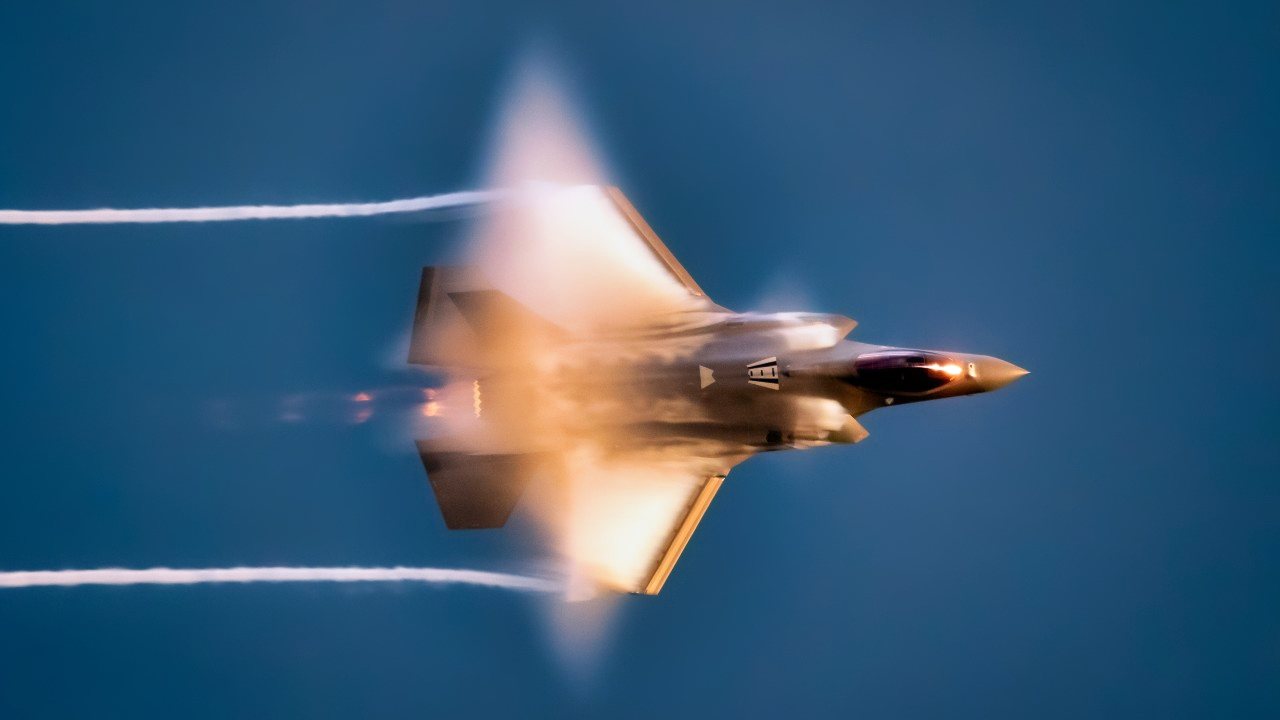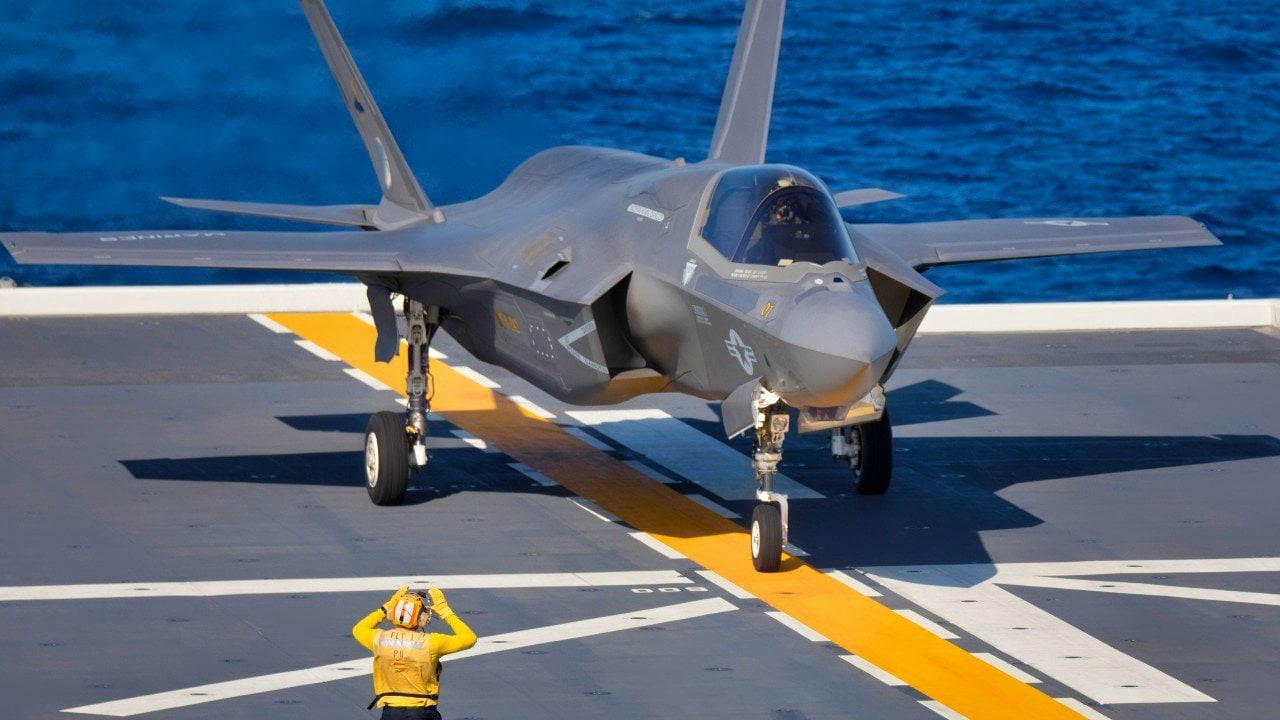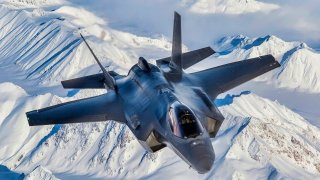The F-35 Fighter Has an Achilles Heel
Lockheed Martin is currently working on the TR-3 software upgrade for the F-35 Lighting II. However, manpower shortages and production issues have delayed the update, clogging the production process. In 2023, Lockheed Martin built approximately 158 F-35s of all versions, but it delivered only 98 of these aircraft and stored up to 60 jets until the TR-3 software update is ready
Summary: The F-35 Lightning II, a 5th generation stealth fighter, is becoming increasingly popular, with Lockheed Martin delivering over 990 units and clocking nearly 800,000 flight hours. Despite its advanced capabilities, the F-35 faces production challenges, particularly with the TR-3 software upgrade, leading to delivery delays. This upgrade is crucial for enhancing the jet's digital infrastructure and weapon systems. The program includes 18 countries with a total order of 3,497 aircraft. Lockheed aims to resolve these issues soon, while the Pentagon considers options for aircraft awaiting updates. The F-35 remains a versatile multi-role fighter, essential for modern air superiority.
F-35 Lightning II: Navigating Through Production and Upgrade Challenges
The F-35 Lighting II is the most advanced fighter jet in history. A 5th generation stealth aircraft, the fighter jet introduced much novel technology and capabilities. Every month, the F-35 Joint Program Office and Lockheed Martin release a series of fast facts about the progress of the aircraft’s production and other operational milestones.
The F-35 program is progressing well and more and more countries want to enter the elite F-35 family. However, Lockheed Martin is facing a significant production issue that threatens the smooth delivery of hundreds of new F-35s.
GETTING MORE POPULAR BY THE DAY
As of February, Lockheed Martin has delivered more than 990 F-35s of all versions and produced over 1,000; and those aircraft have clocked almost 800,000 flight hours. In terms of training, over 2,300 pilots have qualified to fly fighter jets, and more than 15,500 maintainers are eligible to support the F-35 fleet around the world.
Currently, the F-35 program is comprised of 18 countries that have ordered 3,497 aircraft of all versions. The largest customer by far is the U.S. military, with an order for 2,456 F-35s, or 62 percent of the total orders. In terms of aircraft, there are 2,582 orders for the F-35A, 575 orders for the F-35B, and 340 orders for the F-35C.
Moreover, 14 services are flying the fighter jet and 12 services have declared an initial operating capability, meaning that at least a minimum of their F-35 fleets are deployable. In terms of activity, there have been almost 500,000 training and operational sorties, over 500 detachments and deployments, and there have been eight unclassified operational missions. In addition, 12 warships (nine American, two British, and one Italian) are outfitted to carry F-35 fighter jets. (By 2028, the F-35 Joint Program Office expects an additional nine warships to be ready to carry F-35 fighter jets.)
However, despite significant progress on the F-35 program, there are some serious issues in the production process, especially around upgrades and the new version of the fighter jet.
PRODUCTION ISSUES WITH F-35’S UPGRADE
Although the F-35 Lighting II is the most advanced fighter jet in the skies today, that doesn’t mean that upgrading it isn’t necessary. With China close at the heels of the U.S. in terms of defense spending, the Pentagon is looking to stay ahead and ensure dominance in the event of a conflict.
Lockheed Martin is currently working on the TR-3 software upgrade for the F-35 Lighting II. However, manpower shortages and production issues have delayed the update, clogging the production process. In 2023, Lockheed Martin built approximately 158 F-35s of all versions, but it delivered only 98 of these aircraft and stored up to 60 jets until the TR-3 software update is ready.
According to Lockheed Martin, the TR-3 update will upgrade the F-35’s onboard digital infrastructure, improving its data storage and processing capabilities; and improve the user interface, thus making the pilot’s life easier. The new software will also enable the stealth fighter jet to carry new air-to-air and air-to-ground weapons, sensors, and cyber countermeasures.

Complicating matters even further is the fact that the upcoming Block 4 upgrade needs the TR-3 as a software upgrade as a base. So, until the TR-3 update is ready, Lockheed Martin can’t incorporate the Block 4 upgrade and further advance the stealth fighter jet.
Lockheed Martin expects the TR-3 issues to be resolved in the upcoming months, while the Pentagon is considering accepting TR-2 aircraft currently in storage and waiting for their updates.
THE F-35 LIGHTING II
The F-35 Lighting II is a multi-role 5th generation fighter jet with three variants.
The F-35A is the conventional version that takes off and lands in runways; the F-35B is the Short Take-off, Vertical Landing (STOVL) iteration that can take off and land like a helicopter; the F-35C is the carrier version of the fighter jet that operates from aircraft carriers.

In terms of capabilities, all three variants share similar attributes but with some minor differences, such as the landing gear, fuel capacity, and structural robustness.
As a mutli-role fighter jet, the F-35 Lighting II specializes in Strategic Attack, Air Superiority, Close Air Support, Electronic Warfare, Intelligence, Surveillance, and Reconnaissance (ISR), Suppression of Enemy Air Defenses (SEAD), and Destruction Enemy Air Defense (DEAD) mission sets.
About the Author
Stavros Atlamazoglou is a seasoned defense journalist specializing in special operations and national security. He is a Hellenic Army veteran (national service with the 575th Marine Battalion and Army HQ). He holds a BA from the Johns Hopkins University, an MA from the Johns Hopkins’ School of Advanced International Studies (SAIS), and is pursuing a J.D. at Boston College Law School.
This article was first published by Sandboxx News.


